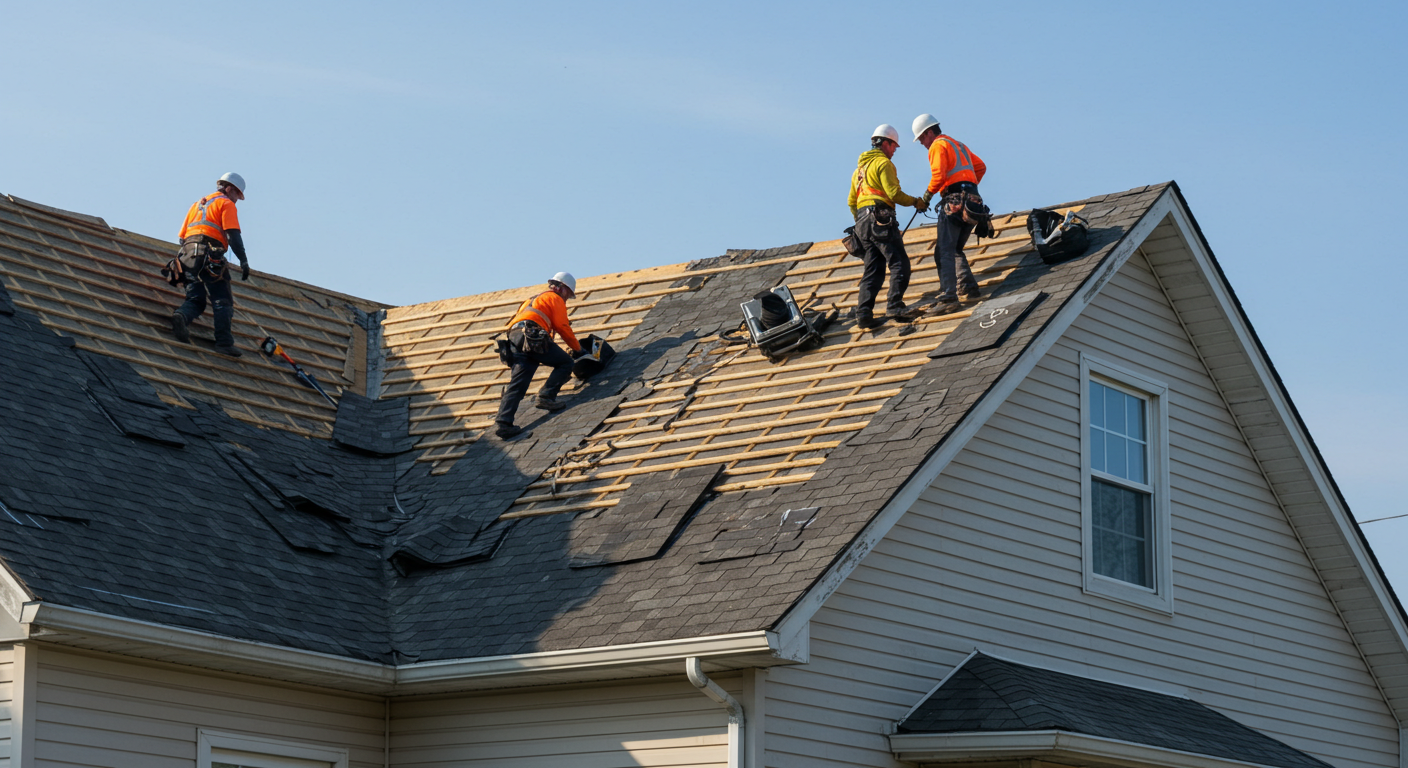Your roof is more than just a protective shield; it’s a critical part of your home’s value and character. When it comes time for a replacement, understanding the entire process is essential to ensure a smooth transition and a roof that complements your home. This complete guide will walk you through each step, from inspection to installation.
Understanding the Need for Roof Replacement
Every homeowner eventually faces the reality of a roof replacement. Just like any other part of your home, roofs have a limited lifespan and are subject to wear and tear over time. Understanding when it’s necessary to replace your roof is crucial for maintaining both the aesthetic appeal and safety of your home. Be on the lookout for several telltale signs, such as curling or missing shingles, leaks inside your home, or visible sagging in the roofline. Each of these issues can serve as a significant red flag that it’s time to take action.
What to Consider When Choosing Roofing Material
Once you’ve decided that a replacement is necessary, the next step is to select the right roofing material. Not only will this decision impact your roof’s longevity, but it will also influence your home’s overall curb appeal and resale value.
Common Roofing Materials
– Asphalt Shingles: These are a popular choice due to their affordability and ease of installation. They typically last between 15 to 30 years and offer a variety of styles and colors to suit your home.
– Metal Roofing: Known for its durability and energy efficiency, metal roofing can last 50 years or more and often withstands harsh weather conditions.
– Wood Shakes: Providing a rustic aesthetic, these shingles can offer a unique look but require regular maintenance to prevent rot and insect infestation.
– Slate Tiles: Elegant and long-lasting, slate roofing is a premium option that can last over a century. However, it also comes with a higher price tag and requires skilled installation.
How to Hire a Qualified Roofing Contractor
Partnering with the right roofing contractor can make all the difference during your home renovation. Start by gathering multiple bids from reputable companies. Don’t hesitate to ask questions and compare their previous work.
Key Questions to Ask
– What is the total cost, including labor and materials?
– What warranties are offered?
– How long will the project take?
– Are they licensed and insured?
Securing Necessary Permits
Before tearing off your old roof, it’s essential to check with your local authorities regarding any necessary permits. These requirements can differ widely by location and may cover issues like zoning and building codes. Skipping this step can potentially lead to costly fines or delays.
The Step-By-Step Roof Replacement Process
Once you’re ready to proceed, understanding the overall roof replacement process can help manage expectations. Here are the basic steps involved:
Step 1: Roof Inspection
Begin by assessing the condition of your existing roof. While a DIY inspection can yield some insights, a professional evaluation can uncover hidden issues and provide a more comprehensive view.
Step 2: Tear Off the Old Roof
This phase involves systematically removing the old shingles and inspecting the underlying structure for any damages. Make sure that your contractor conducts a thorough inspection of the roof deck and replaces any compromised areas.
Step 3: Install Underlayment and Drip Edge
Once the old roof is removed, a moisture-resistant underlayment is applied. The installation of a drip edge is also crucial, as it helps direct water away from the roof and into the gutters.
Step 4: New Roof Installation
Following the underlayment, it’s time to lay down your new roofing materials. Whether you have chosen shingles or metal panels, be sure that your contractor seals everything correctly to prevent leaks.
Step 5: Final Inspection and Cleanup
After installation, conduct a final inspection to ensure everything is aligned and secure. Following this, a cleanup process should commence to remove debris and leftover materials from your property.
Preventive Maintenance: Ensuring Longevity
Once your new roof is in place, adopting a routine maintenance plan is invaluable. Simple tasks like cleaning gutters, inspecting for leaks, and maintaining ventilation can extend the life of your roof and save you money in the long run.
For more information, you might find these resources helpful: roof installation tips, material selection, choosing contractors, warranties explained, and seasonal maintenance.
This comprehensive guide sets you on the path toward a successfully completed roof replacement. By taking the time to understand the process, securing qualified professionals, and making informed decisions, you can ensure that your new roof will serve your home beautifully.
